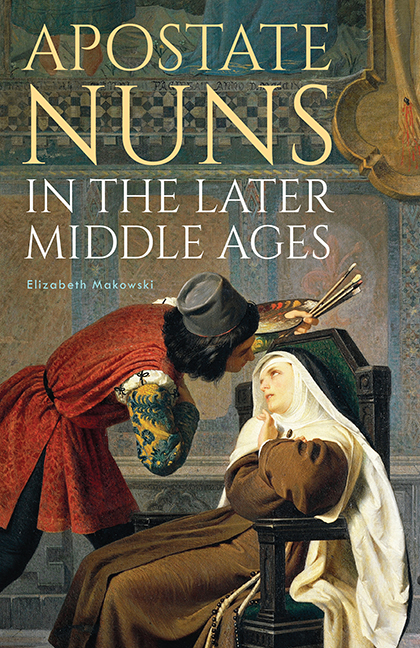Book contents
- Frontmatter
- Contents
- Preface
- Acknowledgements
- List of Abbreviations
- Introduction
- Part I The Vowed Life
- Part II Casting Off the Habit of Religion
- 2 Force and Fear
- 3 Land, Lust, and Love
- 4 Diversions and Disasters
- Part III Prodigals Return
- Conclusion
- Bibliography
- Index
- Other volumes in Studies in the History of Medieval Religion
3 - Land, Lust, and Love
from Part II - Casting Off the Habit of Religion
Published online by Cambridge University Press: 18 September 2019
- Frontmatter
- Contents
- Preface
- Acknowledgements
- List of Abbreviations
- Introduction
- Part I The Vowed Life
- Part II Casting Off the Habit of Religion
- 2 Force and Fear
- 3 Land, Lust, and Love
- 4 Diversions and Disasters
- Part III Prodigals Return
- Conclusion
- Bibliography
- Index
- Other volumes in Studies in the History of Medieval Religion
Summary
Unlike the women with whom we have just dealt, whose vows had been coerced or otherwise technically invalidated, canonically professed nuns had no grounds to file petitions for nullification of vows and could not legally return to secular society. If a nun had freely, even if unenthusiastically, pronounced her vows, she had few options to alter her lot if she later became unhappy with it. She might request a transfer to another community, but that course of action presupposed dissatisfaction with a specific house and not with the overall constraints of religious life. Unlike her male counterparts, she could not aspire to ordination and the beneficed status that it often carried, nor could she enter university life. Yet the gulf that separated distaste for, or even loathing of, religious life from the abandonment of it was immense. For many apostate nuns that gulf would be bridged only gradually, by incremental ‘adjustments’ to cloistered life. This was particularly true for those whose apostasy stemmed from temptations against the vows of poverty and chastity.
It suited the disaffected nun to strive to transform her environment into something akin to the one she would have enjoyed had she remained in secular society. The peaked headdresses, gold combs, slashed sleeves and pleated robes, adopted by nuns in imitation of fashionable matrons, and so often railed against by episcopal synods and monastic visitors, attest to this effort. So too the keeping of pets, relaxation of liturgical duties, and the acceptance of clandestine gifts from, and visits with, outsiders, all of which eroded barriers between the monastery and the larger world. Once those barriers were sufficiently worn down, however, temptations of a more serious type presented themselves. Sexual liaisons begun within a monastery for example, and the consequences of these clandestine unions, often made escape look like the only option for a miscreant. So too, incremental erosion of cloistered routine and departure from monastic ideals acted as solvents to the equally binding, and scarcely less appealing, vow of poverty. The desire for land, as much as for love, could and did lead nuns into apostasy.
In the later Middle Ages, observance of the vow of poverty in communities throughout Europe was neither strict nor uniform. In late medieval Spain heritable chattels and even revenues from land were allowed to the professed at times.
- Type
- Chapter
- Information
- Apostate Nuns in the Later Middle Ages , pp. 78 - 104Publisher: Boydell & BrewerPrint publication year: 2019

